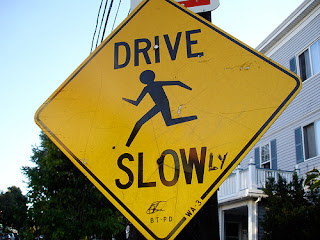Want to be a better writer? Here are the ten most important tips that I can think of to grow as a writer.
Number one: Write.
Every day. Even when you don’t feel like it. Write until your fingers are bloody stumps on your hands. Keep writing until you hate the story you’ve written. Don't stop writing.
Number two: Read.
A lot. And many genres, many authors. Every book that you read expands your knowledge of the written language. Reading popular books informs you of the publishing market, it shows you what types of authors and writing are well received. When I read, I find myself admiring or criticizing the language and, sometimes, being inspired by the book. This does not lead to stealing ideas, as some think, but to stronger writing. I can take that sentence I admire and break it apart to see why it works for me, in the hopes of replicating that in my own writing.
Number three: Don’t stop to edit.
Do that later. Keep writing the story that’s in you until it’s out completely. Only then, should you go back and edit. This prevents you from getting discouraged and stopping before you complete the first draft. Once you reach the end of your first draft, give it a couple of weeks (days at the least), then start editing.
Number four: Do write what you know.
By writing what you know, you are lending authenticity to the plot and characters. However, although I suggest this, I think that there are times you can write what you do not know. Be warned, however, that when you write about something you are not familiar with, research is a must. The Internet is a wonderful tool that writers have nowadays to begin their research with.
Number five: Don’t use passive tense.
Passive tense creates doubt in the reader’s mind about the narrator. Which sounds better? If the narrator says, “I seemed to think he was lying”? Or “He lied”? Using active tense creates immediacy and instills confidence in the narrator. In active tense, we trust that the narrator knows what is going on. A reader likes to feel like they’re being led by a confident narrator.
Number six: Do be sparing with adjectives and adverbs.
These are words ending in -ly or describing nouns. I didn’t say “avoid” using adjectives and adverbs, as a properly placed adjective or adverb can be useful in describing the scene. However, too many draw attention to themselves and become not only distracting, but lazy and laughable.
Number seven: Do use correct grammar.
Some writers say that’s what editors are for, but, let’s face it, an editor cannot catch everything. It is only beneficial for you to take the time to write correctly. It’s not only easier to read, but it strengthens your writing and makes your story smoother.
Number eight: Don’t be afraid to cut.
You know that scene that you’re not sure about? Cut it. That scene that even you start to skim? Cut it. Ditto on the scene with that character that you thought was going to turn into a main character, but didn’t. Cut as much as possible--and you’ll be left with the strongest part of your story, the real story.
Number nine: Do show, don’t tell.
This is a pet peeve of mine. The one thing I hate the most in reading a book is when the author stops to tell me what already happened. I’m flying along, getting into the story, then I hit a brick wall: the author starts telling me what’s already happened to the character. Instead of showing me the action, I’m told about it. Granted, there are times that a recapping is better than action, like when the action happened a long time ago, or we’re merely switching from one location to another. I don’t need a play-by-play for how the protagonist got from their apartment to their office, but I certainly want to see how the protagonist broke up with his girlfriend.
Number ten: Do have a neutral party read your story.
A word of warning: do not let anyone read that first draft you’ve written. It is far too fragile for a critical eye. Only after a second or perhaps third draft is your story ready for anyone else’s eyes. And don’t think that you’ll get an honest answer from your family or friends. If possible, find a writer’s group that can give you impartial feedback. Find several people, if you can, in a variety of circumstances with a variety of talents to read and give you feedback.

